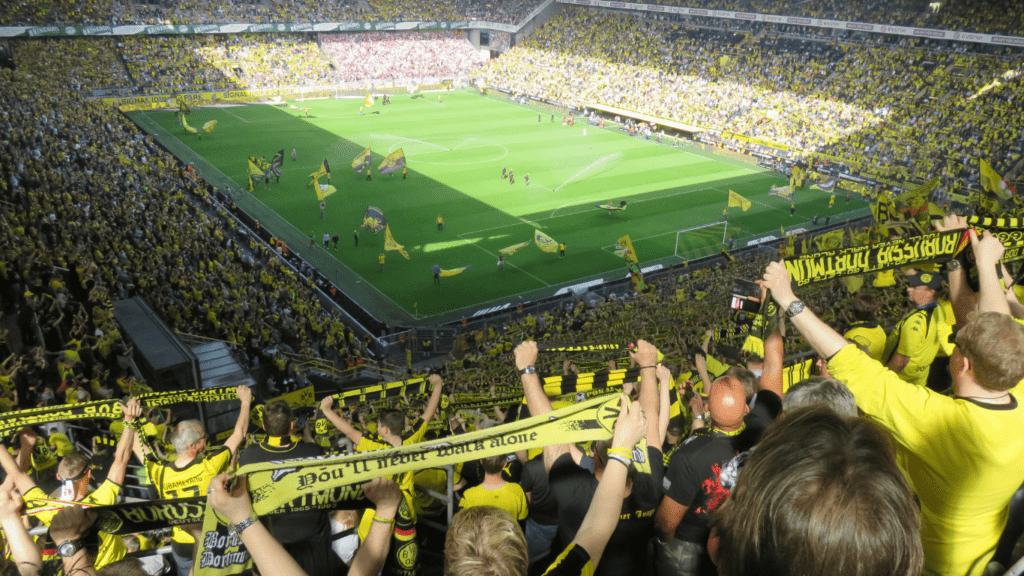The Rise of Social Media in Sports Advertising
Social media has transformed sports advertising, changing how brands connect with fans. Companies now engage with millions instantly through platforms like:
- TikTok
These platforms offer real-time interaction, unlike traditional media, leading to more dynamic and engaging content.
Athletes excel as brand ambassadors, leveraging their social media presence to promote products. For example, Cristiano Ronaldo and Lionel Messi have tens of millions of followers, making them powerful influencers. These athletes’ posts reach a broad audience quickly, enhancing brand visibility and credibility.
Brands benefit from targeted advertising capabilities. Social media algorithms help companies reach specific demographics, improving ad efficiency. For instance, Nike can target soccer fans with tailored campaigns on Twitter, leading to higher engagement rates.
User-generated content boosts advertising efforts. Fans often share photos and videos of sporting events, creating organic marketing opportunities. Hashtags like #JustDoIt have become viral, amplifying brand messages without additional costs.
Real-time analytics provide valuable insights. Platforms like Facebook and Instagram offer detailed metrics on engagement, impressions, and conversions. Brands analyze this data to refine strategies, ensuring better returns on investment.
Social media also democratizes sports advertising. Smaller brands now compete with industry giants by creating compelling content. They attract followers and gain traction without substantial budgets, leveling the playing field.
Monetization opportunities abound through social media. Platforms offer features like Instagram’s branded content ads, enabling brands to collaborate directly with athletes and influencers. These partnerships generate revenue and enhance brand recognition.
Live streaming integrates seamlessly with social media. Events broadcasted live on platforms like YouTube and Facebook reach global audiences. Brands sponsor these streams, gaining exposure to dedicated viewers tuned in for real-time action.
Overall, social media’s rise in sports advertising redefines traditional marketing paradigms. Brands, athletes, and fans now interact in unprecedented ways, creating a vibrant digital ecosystem.
Key Platforms for Sports Advertising
Social media has transformed sports advertising by offering several platforms for brands to engage with fans and promote their products. These platforms include Facebook, Instagram, Twitter, and TikTok.
Facebook leads with its extensive reach, boasting over 2.9 billion monthly active users. Brands use Facebook to run targeted ad campaigns, leveraging its advanced algorithms. Marketers create engaging content using videos, photos, and polls to capture fans’ attention. An example includes Adidas’ interactive campaigns showcasing new sports gear, which help to connect with a broad audience.
Instagram excels in visual storytelling, perfect for sports advertising. With over 1.4 billion users as of late 2022, Instagram’s platform is ideal for sharing high-quality images and videos. Brands and athletes frequently use Instagram Stories to provide behind-the-scenes looks at events. For example, Nike frequently utilizes Stories for launch announcements and athlete endorsements, driving significant engagement.
Twitter offers real-time interaction, making it a prime choice for live events and sports updates. It has about 396 million users, providing an active space for sports fans to follow live updates. Brands use hashtags to create trending topics, like Coca-Cola’s #ShareaCoke campaign during the FIFA World Cup, which fosters fan participation and brand visibility.
TikTok
TikTok has rapidly gained traction with its short-form videos, reaching over 1 billion monthly active users. It offers unique opportunities for creative sports advertising. Brands partner with influencers to create viral content, such as the NFL’s “TikTok Tailgate” campaign, which blended tailgating experiences with user-generated content, enhancing fan engagement on an interactive level.
Strategies for Effective Social Media Marketing in Sports

Effective social media marketing in sports leverages several key strategies to enhance brand engagement. I’ll elaborate on those strategies, providing practical insights.
Influencer Collaborations
Collaborations with influencers can drastically boost brand visibility. When athletes share sponsored posts, fans perceive them as authentic endorsements. For instance, Cristiano Ronaldo’s Instagram posts often feature brands he endorses, driving massive engagement. Partnering with influential athletes or sports figures amplifies reach and credibility, making it a cornerstone of social media marketing.
User-Generated Content
User-generated content cultivates fan involvement and organic brand promotion. Encouraging fans to create and share content related to the brand deepens engagement. Campaigns like Nike’s #JustDoIt invite users to showcase their athletic endeavors, fostering a community of loyal followers. This strategy not only boosts engagement but also provides a wealth of authentic, relatable content.
Targeted Advertising
Targeted advertising maximizes ad spend efficiency by reaching specific demographics. Social media platforms like Facebook and Instagram offer detailed targeting options, enabling brands to hone their campaigns by age, location, interests, and behaviors. These targeted ads yield higher conversion rates and better ROI, ensuring brands connect with the right audience effectively.
Impact on Fan Engagement and Brand Loyalty
Social media is revolutionizing the way fans engage with sports, driving unparalleled brand loyalty. It bridges the gap between athletes, teams, and fans, creating a vibrant, interactive community.
Real-Time Interactions
Real-time interactions transform how fans connect with their favorite sports entities. Through platforms like Twitter, live Q&A sessions with athletes and coaches become common. During major events, fans tweet reactions, forging a sense of community. On Instagram Live, fans watch behind-the-scenes activities, making them feel part of the action. Immediate responses to fans’ comments and messages further enhance engagement, as seen with NBA teams’ real-time updates during games.
Exclusive Content and Offers
- Exclusive content and offers heighten fan engagement and brand loyalty.
- Fans gain access to behind-the-scenes footage, training sessions, and athlete interviews, offering an inside look at their favorite teams.
- Brands leverage these opportunities to provide special promotions.
- Nike’s limited-edition releases linked to major sporting events create buzz. Loyalty programs integrating social media platforms reward fans with discounts and early access, as demonstrated by Adidas’ exclusive drops on Instagram.
- These tactics ensure fans feel valued, fostering a deeper connection to the brand.
Challenges and Considerations
As social media shapes sports advertising, brands face several challenges that need addressing to maximize impact.
Balancing Authenticity and Promotion
Maintaining a balance between authenticity and promotion proves crucial. Fans expect genuine interactions with athletes, not constant advertisements. For example, Cristiano Ronaldo’s posts mix personal content with sponsored content to keep followers engaged. If athletes excessively promote brands, it could damage their credibility. Thus, strategic planning and a native integration approach are essential.
Measuring ROI
Calculating the return on investment (ROI) in social media campaigns presents another challenge. Unlike traditional advertising, social media outcomes can be harder to quantify accurately. Metrics such as likes, shares, and comments provide insights but might not directly correlate with sales. Tools like Google Analytics and native platform analytics help track conversions and engagement. However, determining the direct financial impact on sales requires sophisticated attribution models and consistent monitoring.



